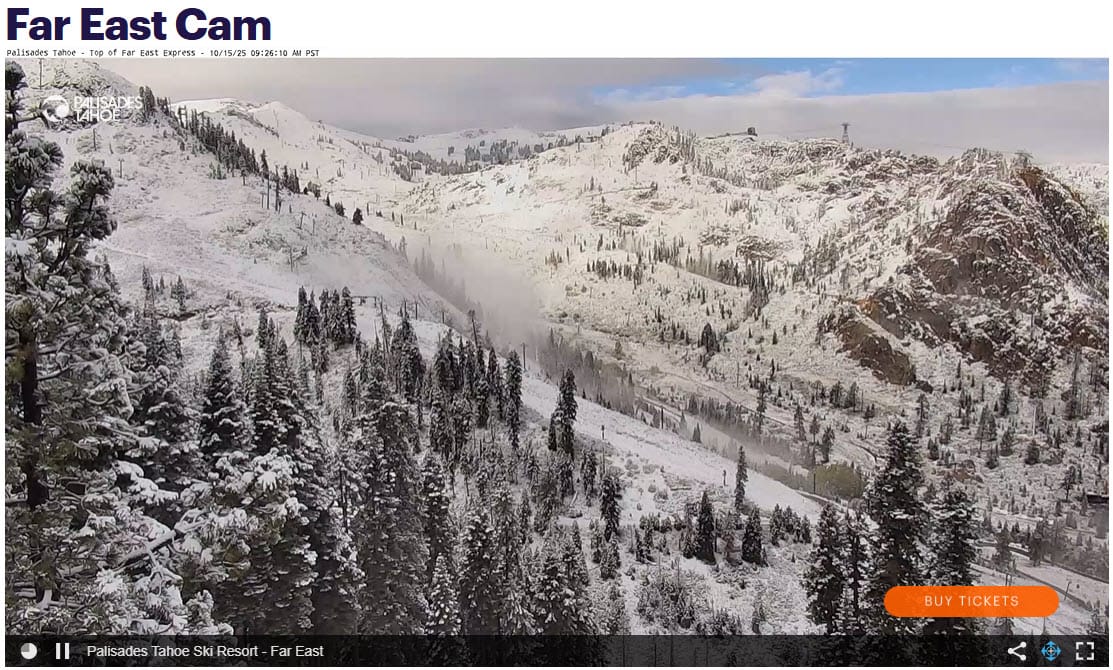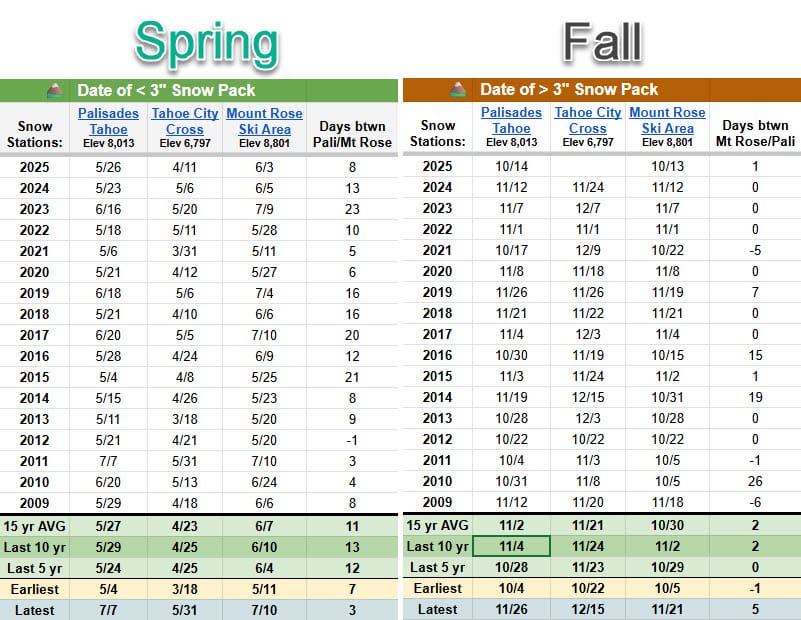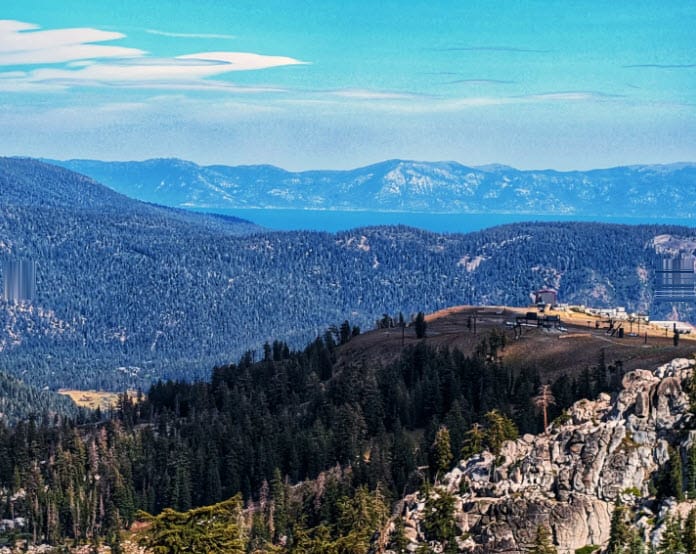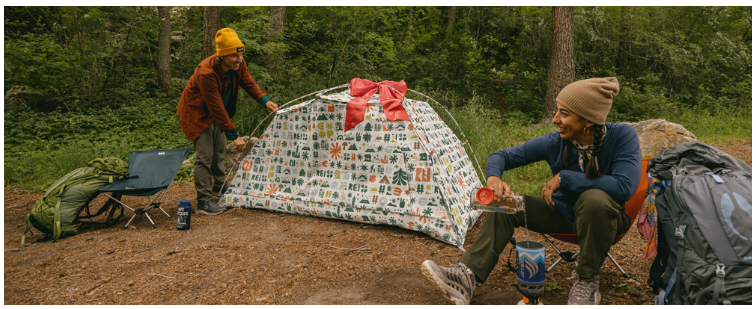The Sierra Closes Early This Year – What ADT Hikers Need to Know
The Sierra Nevada closed for the season on October 13-14, more than two weeks ahead of the historical average. This early closure reinforces why the Halloween deadline matters for westbound ADT hikers and what eastbound spring crossings should expect. Updated snowpack data and planning insights. 🏔️

During the hiking off-season, most ADT hopefuls keep a close eye on Sierra Nevada snowpack conditions. Crossing the Sierra at the right time remains critical to the success of any American Discovery Trail journey—early snowfall can quickly turn an adventure into something far more challenging.
This year's data tells an important story: the Sierra closed earlier than usual. Mount Rose Ski Area in Nevada recorded its first significant snowpack (3+ inches) on October 13, with Palisades Tahoe in California following on October 14.

The "3-Inch Rule" – Your Key to Safe Crossing
If you're planning an ADT thru-hike, the general guideline is to cross the Sierra when snow depth remains below three inches. At that threshold, the range stays passable, though cold and challenging. Once snow accumulates to three inches or more, navigation becomes significantly more difficult, potentially requiring specialized equipment or posing genuine safety concerns.
Our Fall and Spring snowpack charts track these critical tipping points at three Sierra stations along the ADT—Palisades Tahoe, Tahoe City Cross, and Mount Rose Ski Area—helping hikers make informed timing decisions.

Why the Halloween Deadline Still Holds
A well-known guideline among westbound thru-hikers is crossing the Sierra before Halloween. This year's early closure reinforces why that target date matters. With the first meaningful snowpack arriving October 13-14—more than two weeks before the updated averages of November 2 (15-year) and November 4 (10-year)—and snow depths now reaching 8-14 inches across monitoring stations, October remains your safest window for late-season crossings.
Looking back over the last 15 years, the November timeframe for first snowpack has been fairly consistent, with a couple of notable outliers. This year's mid-October closure serves as a reminder that the Sierra doesn't always follow the average, and conservative timing protects your journey.
Additional Insights for Westbound ADT Planners
Average First Snowpack Dates: Over the last five years, Palisades Tahoe and Mount Rose typically reached three inches during the first or second week of November—except during the exceptionally snowy 2021 season.
Historical Range: The earliest recorded first 3+ inch snowfall over the past 15 years occurred October 4 at Palisades Tahoe, while the latest came November 26. This year's October 13-14 closure falls well within that range but leans toward the earlier end of the spectrum.

Spring Melt-Off: Planning Eastbound Crossings
If you're tackling the Sierra in late spring, our Spring Snowpack chart provides the mirror image of fall closure data. This chart tracks when snow levels at these stations drop back under three inches, signaling more accessible conditions for eastbound hikers.
Over the last five years, Palisades Tahoe typically clears around May 23, with Mount Rose Ski Area following approximately June 8. This late May to early June window has become the prime timeframe for ADT hikers looking to cross with minimal snow cover. As always, verify local conditions since late-season storms can shift these dates.
Why We Don't Track Colorado Rockies Snowpack
You might wonder why we don't provide similar data for the Colorado Rockies. The reason is straightforward: timing your Sierra crossing correctly naturally solves the Rockies snow question.
Eastbound ADT hikers crossing the Sierra in late spring or early summer will reach the Rockies during favorable conditions. Conversely, westbound hikers who cross the Sierra before Halloween will have already passed through the Rockies during the summer months. In both directions, proper Sierra timing typically means manageable conditions in Colorado without requiring dedicated snowpack tracking.
Key Takeaways for ADT Hikers
Westbound – The Halloween Rule Remains Sound: This year's October 13-14 closure, arriving two weeks ahead of the historical average, reinforces the wisdom of targeting late October for Sierra crossings. Earlier is safer.
Eastbound – Late May Through Early June: Spring crossings work best during this window when snow levels consistently drop below three inches at monitoring stations.
Adaptability Matters: Even well-researched plans may require adjustment. Weather patterns can surprise, and the Sierra is famous for early storms and unexpected temperature swings.
Planning for What You Can't Predict
The Sierra represents one of the American Discovery Trail's most spectacular and challenging sections. Use this data to inform your planning, but remember that safety always comes first. Whether you're navigating a fall crossing or planning a late spring traverse, stay informed, prepare thoroughly, and respect what the mountains are telling you. 🏔️
Hike Your Hike - John.



